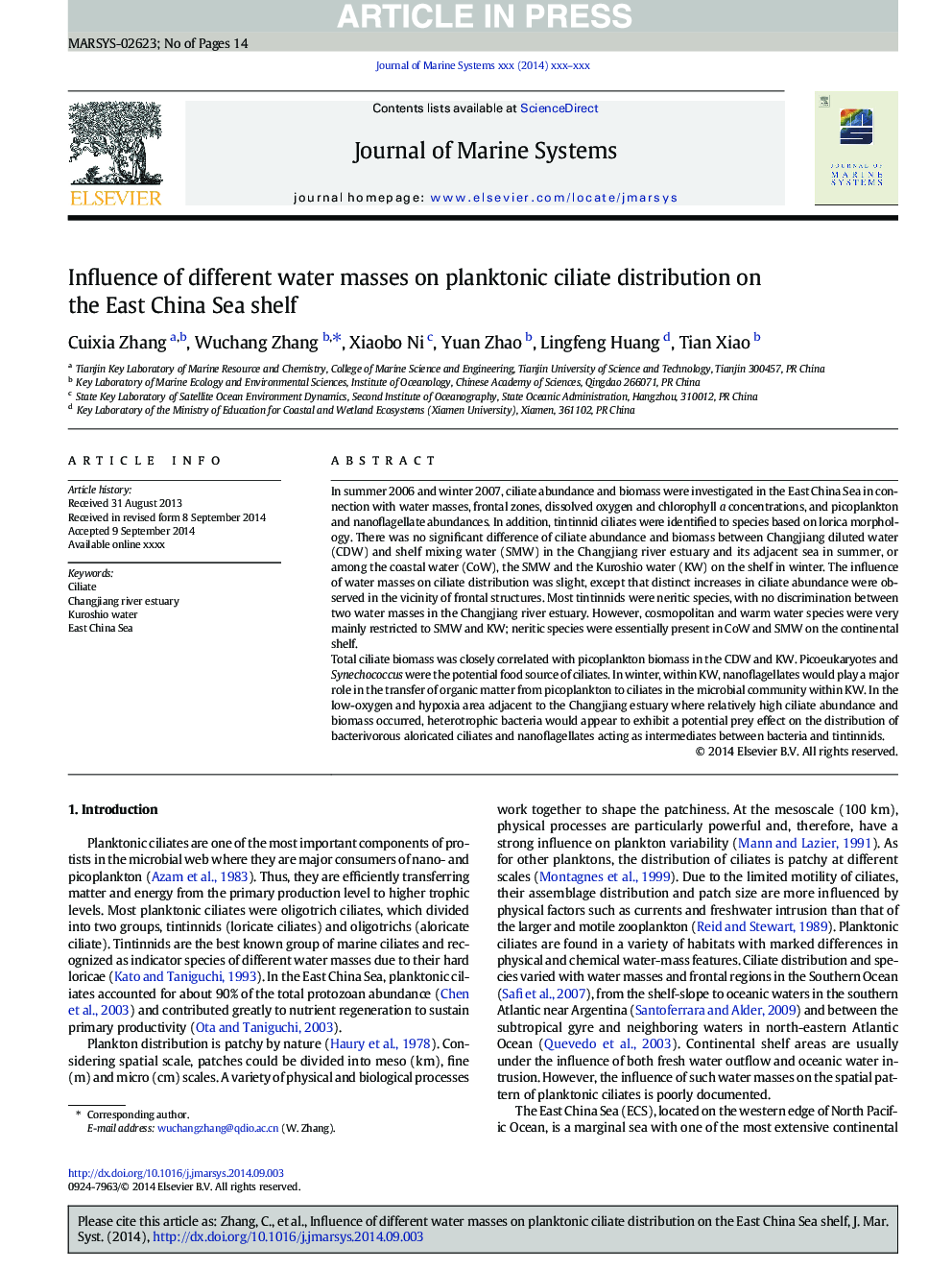| Article ID | Journal | Published Year | Pages | File Type |
|---|---|---|---|---|
| 6386837 | Journal of Marine Systems | 2015 | 14 Pages |
Abstract
Total ciliate biomass was closely correlated with picoplankton biomass in the CDW and KW. Picoeukaryotes and Synechococcus were the potential food source of ciliates. In winter, within KW, nanoflagellates would play a major role in the transfer of organic matter from picoplankton to ciliates in the microbial community within KW. In the low-oxygen and hypoxia area adjacent to the Changjiang estuary where relatively high ciliate abundance and biomass occurred, heterotrophic bacteria would appear to exhibit a potential prey effect on the distribution of bacterivorous aloricated ciliates and nanoflagellates acting as intermediates between bacteria and tintinnids.
Related Topics
Physical Sciences and Engineering
Earth and Planetary Sciences
Oceanography
Authors
Cuixia Zhang, Wuchang Zhang, Xiaobo Ni, Yuan Zhao, Lingfeng Huang, Tian Xiao,
